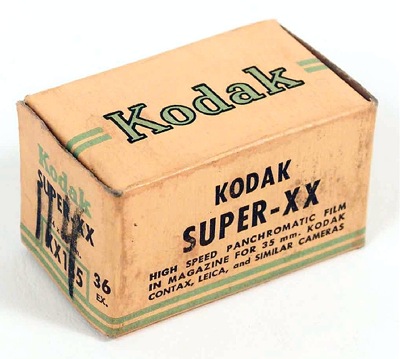 [With this post we offer more newly discovered evidence in support of our radical revision of the Capa D-Day myth.
[With this post we offer more newly discovered evidence in support of our radical revision of the Capa D-Day myth.
Searching further through the USCG film archives, Herrick has now located several more Ruley clips made aboard LCI(L)-94 that pertain to Capa’s D-Day narrative. These show the damage to that vessel inflicted by German shelling, to which Capa refers in his several accounts of his experiences during the invasion. Thereby they raise further question regarding the credibility of Capa’s narratives.
Part 2 appears below. Click here for Part 1. — A.D.C.]
•
Damage Report:
Robert Capa and the Shelling of LCI(L)-94
(conclusion)
by Charles Herrick
•
Pilot House
… The second relevant scene in US Coast Guard cinematographer David T. Ruley’s film clip (beginning at timestamp 00:57) shows the intact base of a projectile lodged in the edge of the porthole in the pilot house of LCI(L)-94. (Figure 7).
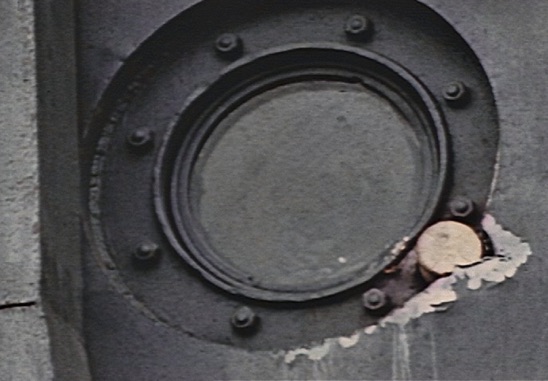
Figure 7. The intact base of a projectile (?) lodged into the porthole mounting ring on the forward face of LCI(L)-94’s pilot house. Still from David T. Ruley film clip. (CriticalPast)
•
The projectile appears to be roughly three inches in diameter. Although precise measurement is a bit difficult, this diameter would be consistent with German defenses in the area. WN62, a few hundred yards to the east of LCI(L)-94‘s beaching site, contained two guns of 75mm bore (2.95 inches); they were captured Belgium 75mm TR field artillery pieces, styled FK 235(b) in German service.[1] They were sited in concrete bunkers to fire westward along the beach, which was precisely the area where LCI(L)-94 beached. (WN62, the abbreviation for Weiderstandnest 62, was the German designation for the fortifications guarding the west side of the Colleville draw, where Exit E-3 led off the beach.)
WN62 did also contain an anti-tank gun and a dismounted tank gun, but both of these were of smaller caliber (50mm) and were sited on the east side of WN62 to cover the valley through which the E-3 exit ran; they physically could not come to bear on LCI(L)-94‘s beaching site.
Figure 8 includes two views of sister ships to LCI(L)-94, and are included to better illustrate where this hit was located. [Left, original source file: NavSource Online: Amphibious Photo Archive, LCI(L)-96. Click here for original image file. Right, original source file: NavSource Online: Amphibious Photo Archive, LCI(L)-89. Click here for original image file.]
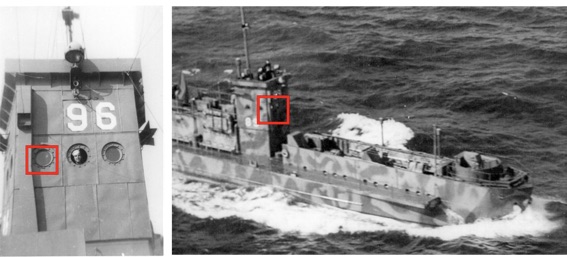
Figure 8. Views of two sister ships to LCI(L)-94, showing where the strike to the ship was located in relation to the rest of the ship’s structure.(NavSource)
•
The projectile’s apparent angle of impact would indicate that the ship was facing nearly head-on to the German cannon at the time it was hit. From Capa’s “One Last Shot of the Beach” photo (and its lesser-known sister photo), it seems that as LCI(L)-94 retracted from the beach the second time, the captain steered the stern to starboard, thus swinging its bow to port — east — and then ordered his engines ahead and had the helm put to port to complete his turn away from the beach. During this maneuver, the forward face of the pilot house would have swung in an arc that, for a few moments, would have been pointed directly at the 75mm gun emplacements on WN62. It was apparently during this part of the maneuver that the ship was hit in the pilot house.
One detail is difficult to explain: the base of the projectile still lodged in the armor. LCIs were only lightly armored, with the pilot house protected by just 2 inches of plastic armor.[2] Although plastic armor was bullet-resistant, it was totally inadequate defense against cannon fire. The projectile we see lodged in the pilot house shouldn’t be there. It should have cleanly penetrated. So, why didn’t it? I can’t say for certain, but we may have a lead. In late May 1944, Rommel noted that the ammunition stores located in the coastal defenses had led to unsatisfactory deterioration of much of the munitions. He ordered stockpiles reduced, with the bulk of the ammunition to be stored under better conditions in army depots.[3] This was just two or three weeks before D-Day, and it seems probable that very little had been done to reduce the supplies in the strongpoints, or replace the damaged ammunition with serviceable rounds.
From Figure 7, we can’t tell much more about the projectile. Was it a solid anti-tank projectile that, due to deteriorated propellant, struck the pilot house at low velocity and failed to completely penetrate the plastic armor? And if this were the case, would it have had sufficient force to cause lethal spalling within the pilothouse? Or was it a high-explosive shell that just barely penetrated into the pilothouse before exploding? And, in that case, would the base of the shell remain lodged where we see it? It doesn’t seem likely.
But let us step back for a minute and reassess. If it doesn’t seem logical that a projectile would lodge in armor that thin, perhaps it isn’t a projectile. A standard element of every Navy damage-control locker (and presumably USCG as well) was an assortment of conical, soft wood plugs. (Figure 9) Although those were normally used to plug holes below the waterline, it may be that such a plug was jammed into this shell hole to keep the weather out.
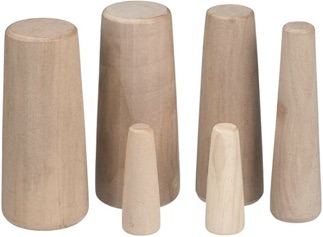
Figure 9. A selection of commercial through-hull soft wood plugs still used today for damage control, and typical of those used by the USCG and Navy in WWII.
With this possibility in mind, a closer look at the photo designated as Figure 7, above, seems to show a small mushrooming effect around the circumference of the object at the base, as you’d expect to see when a soft wood peg has been hammered home with force. (Figure 10) The base of a projectile does not normally show that kind of deformation.
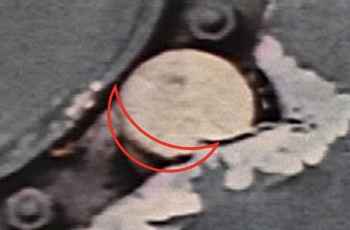
Figure 10. This image is an enlarged detail from Figure 7. The highlighted shadow line indicates an irregular rim projecting beyond the diameter of the rest of the object, consistent with a soft wood that “mushroomed” as a result of being hammered.
•
If it actually is a wood plug, and I believe it is, then the projectile penetrated cleanly though the front armor of the pilot house before detonating, and the full force of the shell’s explosion would have been contained in the pilot house, with devastating results.
While questions remain about this projectile’s nature, the result was painfully clear. In addition to the casualties, the pilot house lost electrical power, which in turn knocked out electrical steering control and killed the ship’s internal communications. Fortunately, the captain and crew were skilled enough to almost immediately switch to manual steering from the compartment in the stern, directed by means of an improvised chain of sailors who passed along the captain’s verbal orders. As a result, the ship was only slightly delayed in its withdrawal from the beach.
The Third Shot?
So, how many hits did LCI(L)-94 sustain? Clifford Lewis (who was not in a position to witness the hits) and Ruley (who was) both claimed the ship was hit three times. Mark Graham (who was also in a position to witness the hits) only cited two. All three of these accounts were recorded within a year of the events, when memories should have been fresh. So who are we to believe?
Without claiming certainty, I suggest Graham’s account may be more accurate. As a boatswain’s mate, his duties included upkeep of the ship’s external structure, rigging, deck equipment, and damage-control parties. As such, I believe he would have been far more attuned to the exact location of hits and damage resulting from those hits. Supporting this conclusion is the fact that Ruley only filmed damage at two points on the ship. If there had been a third hit, I assume Ruley would have filmed it as well.
On the other hand, Lewis mentioned that the ship departed the beach missing its port boarding ramp, which had to be cut away. Could this have been a result of a third hit? Or was it jettisoned because the ramp jumped its rollers and became jammed in the deployed position (a not uncommon malfunction with that design)? Again, we can only speculate. Since Graham’s duty station during beaching was at the ramps, I suspect that if one of his ramps had been hit by artillery fire, he would have mentioned it.
So, lacking other evidence, I think there were just two hits to LCI(L)-94.
Cost
Total damage from the approximately 30 minutes LCI(L)-94 spent on the beach:
- Seaman 1st Class Jack DeNunzio. Both legs and part of his stomach shot off; died shortly after being hit.
- Motor Machinist Mate 3rd Class August Buncik. Decapitated, died instantly.
- Seaman 1st Class Fletcher Burton. Dead from concussive force of shell explosion.
- Quartermaster 3rd Class David Anthony. Shrapnel wounds to feet and legs.
- Lieutenant, Junior Grade Francis Mead. Shrapnel wounds to back.
- Hit to pilot house resulted in lost steering, electrical systems and communications.
- One of two propellers damaged on underwater obstacles.
- Port boarding ramp, cut away during retraction from beach.
Even so, considering the damage taken by other LCIs during this period, LCI(L)-94 got off relatively lightly. Which, of course, is a hollow judgment as far as the five men mentioned above are concerned. Nevertheless, the ship managed the necessary temporary repairs and continued to serve off Omaha Beach for some weeks.
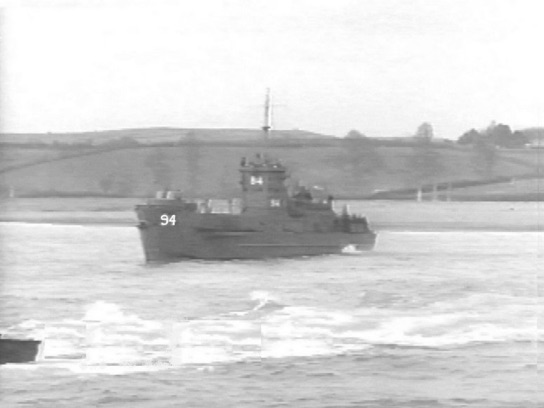
USS LCI(L)-94 off Slapton Sands, England, prior to the Normandy invasion, circa May 1944. (NavSource)
•
The Guns
Above I referred to the two 75mm artillery pieces located in WN62 as being the source of the hits. In fact, we can actually identify the specific piece responsible for the hits to LCI(L)-94. These two artillery pieces were sited in concrete bunkers, at two different elevations on WN62’s hill. According to Zaloga, the upper bunker took a severe beating on D-Day, suffering at least 27 direct hits, including at least 7 that entered the embrasure and exploded inside. “At 0745 hours, the Grenadier-Regiment.726 command post reported that the upper 75mm gun bunker in WN62 had been knocked out.” As a result, when LCI(L)-94 was hit about an hour later, the only artillery piece still in action was the one sited in the lower bunker. Although it took its toll on LCI(L)-94, it would not survive much longer. By 1000 hours it, too, was reported knocked out of action, with its entire crew killed or wounded. [4]
There is one question left unanswered. Why did this German gun wait so long to fire? Logically it should have fired just as LCI(L)-94 arrived, so that it could inflict maximum casualties among the tightly packed soldiers before they had a chance to step ashore. Instead, it did not fire until all the troops had debarked, and the ship had accomplished its mission. That bunker had also been taking severe counterfire; perhaps it had been put temporarily out of action and the crew had only just got it back in working order in time to take the parting shots? But if that were the case, it would have been better to simply withhold fire until a better target appeared. So, for now, this too remains a mystery.
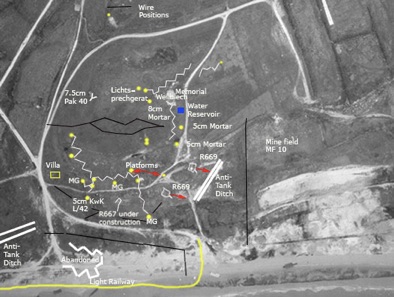
Aerial photo of WN62 with notations showing features of the defense. (Image and notations from ATLANTIKWALL.CO.UK). The two features labelled “R669” (center, just to the left of the anti-tank ditch) were newly built bunkers housing the 75mm field artillery pieces that covered the beaching site of LCI(L)-94. The LCI beached at the right edge of this photo, only about 400 yards from the two guns. Zaloga identifies these two bunkers as Type R612 (vice R669). The upper bunker is now the base for the memorial to the 5th Engineer Special Brigade.
•
Capa, Again
Where does this new film footage leave us with Capa? Well, generally speaking, it justifies and reinforces the need for a healthy skepticism when dealing with any of his narratives. More specifically, it calls into question many of the details he provided in his two accounts of his departure from Omaha Beach. His borrowing of LCI(L)-85‘s “listing and sinking” confounded biographers and historians alike for decades.
In an unlucky coincidence, LCI(L)-85 was badly shot up while attempting to land at Fox Green beach sector, in the area where most of Company E, 16th Regimental Combat Team landed. Since Capa had fabricated a narrative in which he landed with that very same company, LCI(L)-85 was then seized on as, logically, his means of escape from Omaha Beach.
His authorized biographer, Richard Whelan, doubled down on this nonsense, constructing a narrative that had Capa first leaving the beach on LCI(L)-85, returning to the USS Samuel Chase, then making a second landing by some unspecified means, and finally wading away from the beach a second time to board LCI(L)-94. [5] The need to reconcile the LCI(L)-85 myth with Jarreau’s and Lewis’s factual accounts placing Capa aboard LCI(L)-94 as it left the beach required this literary backflip.
Of course, Capa did not land on Fox Green with company E. He landed on the east end of Easy Red. But that point was not definitely proven until separate analyses by Pieter Jutte and I came to the same conclusions as to the location. Prior to that, however, the lie had become self-sustaining and self-reinforcing.
Capa’s description of boarding LCI(L)-94, simple as it appears, raises many more concerns. For instance, there is the small matter of his comment: “Then I saw the superstructure had been shot away.” This was a massive exaggeration considering the small extent of the structural damage that Ruley documented. It does, however, provide a useful yardstick by which we can measure the scale of Capa’s habitual exaggerations.
Also, how could the impact of two (or three?) medium-caliber artillery shells appear to him to be merely a single “slight impact”? If, as he claimed in one version, he had just reached the deck when the shells hit, then he would have been within just a few yards of their impact points. Even if only one of the projectiles was a high-explosive shell, how could he not have taken greater notice at such close proximity to the detonation?
And what of the “chicken feathers”? The kapok debris field is clearly visible in a limited area up on the boat deck in both Capa’s photos and Ruley’s film. But Capa was not up there when the shells hit. Nor is there any sign of kapok debris on his uniform when Ruley’s camera captured him a short time later. [6] How could this be? Was this yet another detail he observed and casually co-opted for himself?
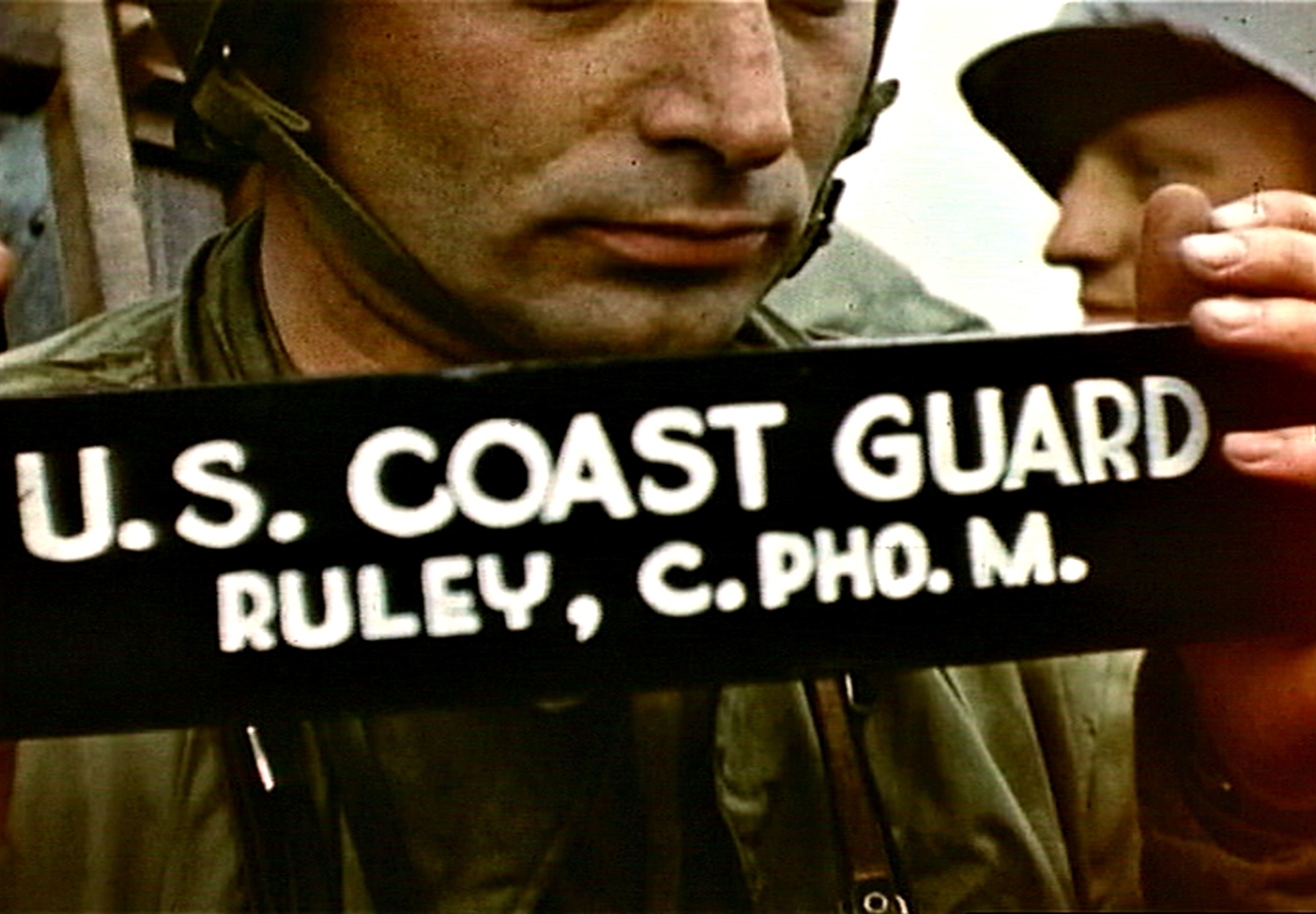
Fig. 10: Robert Capa holding cinematographer’s slate aboard LCI(L)-94, D-Day, frame from film by David T. Ruley
And then there is the question of changing his film. In the Wertenbaker version, as soon as he climbed aboard he began changing the film in his camera, and then he felt the “slight shock” of the hit. But in his autobiography, as soon as he reached the deck the shell hit, and he didn’t begin to change film until he reached the engine room where he could dry his hands. Well, which is it?
These, and several other oddities, have led me to conclude that Capa’s story of boarding LCI(L)-94 is false. It just doesn’t add up. Let’s step back and reassess. If so much of this fails to make sense, then perhaps we’re not seeing the whole picture. Or … maybe we’re looking at the wrong picture. A review of the material pertaining to LCI(L)-94′s operations on D-Day reveals an important point, and once again it is Chief Photographer’s Mate David T. Ruley who comes through for us.
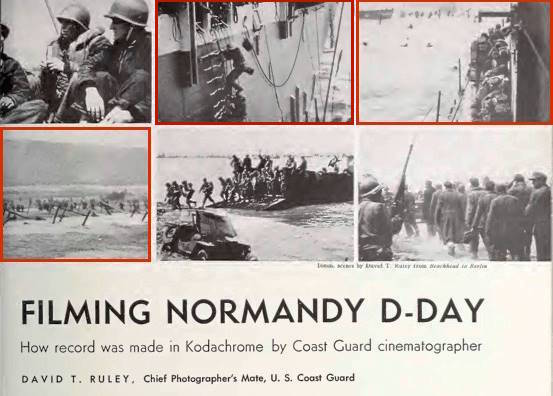
Fig. 8: Cinematographer David T. Ruley, illustrations for first-person account of D-Day experiences, Movie Makers magazine, 6/1/45
At the end of an earlier post on this site, I briefly referenced an article Allan Coleman had dug up. The article, written by Ruley and recounting his D-Day experiences, was carried in the June, 1945 issue of Movie Makers magazine. [Click here for a pdf download of this article.] According to Ruley, he was up on the open bridge and on the boat deck during the landing on Easy Red; so, of all the LCI(L)-94 crewmen who provided accounts, he had the best situational awareness. As a result, he was aware of details that other crewmen, who were stationed below decks, had no way of knowing.
In particular, he revealed that the ship actually made two beachings. After about 100 troops had disembarked at the ship’s first beaching site, the stern of the ship was being swept toward a mined obstacle by the tide. As a result, the captain had the ship retracted, then brought it back in for a second beaching about a hundred yards to the east.
Now, that is an interesting development. We have a second — and earlier — boarding opportunity for Capa. When they stopped sending troops down the ramp so they could back off the beach to relocate, Capa would have had a boarding opportunity, of which a man on the verge of panic would surely avail himself. A rough estimate for this would be about 0830-35 hours, according to the timeline I worked out. And that seems to solve many of the questions raised by Capa’s narrative.
For example, boarding at this earlier time means Capa would have been drying off in the engine room when the ship was hit. And sitting there, two decks below and two compartments aft of the shell hits, and surrounded by the roar of eight Detroit Diesel, 6-cylinder, 426 cubic inch engines, the shell explosion would indeed seem to be just the “slight shock” he described.
A full discussion of this hypothesis is far beyond the scope of an article dealing with the combat damage suffered by this ship. That will have to wait for another day.
(Part 1 I 2)
•
Notes:
[1] This identification is from Steven Zaloga’s The Devil’s Garden, Rommel’s Desperate Defense of Omaha Beach on D-Day (Stackpole Books, 2013), location 1828 in Kindle edition. Heinrich “Hein” Severloh, one of two defenders of Wn62 who published their accounts of D-Day, identified these guns as “7,65-cm-Feldkanone Modell 1917” (WN 62 — Erinnerungen an Omaha Beach: Normandie, 6. Juni 1944, German Edition. Mythos Verlag. Kindle Edition, location 85). Pictures of the guns appear to bear out Zaloga’s identification.
[2] “Plastic armor” was a generic term for small, hard pieces of aggregate held in a matrix of bitumen (similar to asphalt concrete) or in a mastic of resin. It was applied in soft form and would harden in place as it cured. Slabs two inches thick were applied on top of the ship’s 1/4-inch steel plating for the pilot house, open bridge and on the gun shields.
[3] Zaloga, location 1100 in Kindle edition.
[4] Zaloga, location 2620 in Kindle edition.
[5] Whelan, Richard, This is War! Robert Capa at Work, Steidl/International Center for Photography, 2007. P. 235.
[6] A full analysis of this part of the timeline is beyond the scope of this article. For now, suffice it to say he had left the engine room and was back on deck within just two or three minutes of the shells striking home.
•
Acknowledgement
I would like to extend my thanks to Mr. John France, USS LCI National Association, for his kind assistance. He and many other great individuals are doing wonderful work keeping this bit of history alive and relevant. Thank you!
•
Notes on sources
Steven Zaloga’s The Devil’s Garden, Rommel’s Desperate Defense of Omaha Beach on D-Day (Stackpole Books) is yet another outstanding book from probably the best author on the technical aspects of this battle, as well as many other military technologies, especially armored vehicles. I wholeheartedly recommend this book to serious students of Omaha Beach on D-Day. His many other published works serve as the definitive resources for their subject matter. As The Devil’s Garden relates to this project, I would merely point out that he said LCI(L)-94‘s beaching site was “nearby” that of LCI(L)-92, which would have been almost 3000 yards west of the actual spot. This mistake is understandable, as that was generally where it should have landed and where some of the crew thought it did land. His book was published in 2013, before LCI(L)-94‘s actual beaching site was established.
Greg H. Williams, The US Navy at Normandy: Fleet Organization and Operations in the D-Day Invasion, (McFarland & Company, Inc., 2020). This book is perhaps the naval counterpart to Zaloga’s, except that Williams’s volume covers a much broader subject matter, but in much the same depth. At well over 600 pages, the wealth of information it contains is staggering. Williams’s is the only source outside our own project that has identified both Ruley and Capa as aboard LCI(L)-94. Unfortunately, he does not cite his source, but I would like to think he was influenced by our Guest Post 24 (May 2017) on that very subject. Regardless of that vanity, this is another important reference for a serious student of the campaign.
•
Text copyright © 2021 by Charles Herrick. All rights reserved.
•
(For an index of links to all posts in this series, click here.)
•
 Charles Herrick joined the U.S. Army in 1970 and graduated from the U.S. Military Academy at West Point in 1974. Commissioned in the Infantry, he earned the Ranger tab and Master Parachutist’s wings. He served in a variety of positions from company grade officer to the Pentagon. He earned the Combat Infantryman’s badge while assigned as the Operations Officer of the 193rd Infantry Brigade in Panama in 1989, and later graduated from the U.S. Army War College.
Charles Herrick joined the U.S. Army in 1970 and graduated from the U.S. Military Academy at West Point in 1974. Commissioned in the Infantry, he earned the Ranger tab and Master Parachutist’s wings. He served in a variety of positions from company grade officer to the Pentagon. He earned the Combat Infantryman’s badge while assigned as the Operations Officer of the 193rd Infantry Brigade in Panama in 1989, and later graduated from the U.S. Army War College.
Since retiring from the Army in 1996, Herrick has continued to work on defense issues as a contractor in East Asia, Latin America, the Balkans, Africa and Central Asia. He holds an MBA from the University of California at Los Angeles. He lives in California with his wife, where he pursues his passion for military history. To contact Charles Herrick, click here.






Do you really think this is remotely interesting? Apparently you can’t live with the simple fact that Capa’s pictures are some of the best coming out of WWII. No-one cares about the back story, which has nothing to do with photography. If you were to tell me that someone other than Capa made those pictures and that Caps took them off the real photographer’s dead corpse, that would be a story.
I have no problem “liv[ing] with the simple fact that Capa’s pictures are some of the best coming out of WWII.” That’s never been in dispute in this project, which concentrates on one particular set of his pictures and the myth that has barnacled onto them.
On the other hand, you clearly have a problem with someone having the temerity and persistence to investigate the making of those photographs and the cynical, self-serving promulgation of that myth for going on eight decades. This is your third snarky comment on the project published here, plus a fourth sent to me via email.
To answer your question, yes, I continue to find it interesting. So did the Society of Photographic Education, which sponsored my lecture based on this research at its National Conference in 2019 and then published the text thereof at its website, where it quickly became the most-read article the organization has ever published. So did the editor of the AARP’s website, who presented a summary of it to that organization’s millions of members on the 75th anniversary of D-Day. So did the Society of Professional Journalists, which awarded it their Sigma Delta Chi (SDX) Award for Research About Journalism. So did military historian Peter Caddick-Adams, who acknowledged his debt to the project in his massive 2019 study Sand and Steel: The D-Day Invasions and the Liberation of France. Among others.
So, in pressing ahead with this investigation (spoiler alert: more to come!), I can listen to experts in the fields of photography, journalism, and military history as they weigh in on the project’s value, or I can listen to someone who has no credentials in any relevant discipline but simply enjoys sneering childishly at an enterprise that doesn’t interest him. Golly gosh, that’s a hard one.
And keep in mind too that Capa was among the bravest of the photographers of his generation. He was killed during the first Indo-China war, which he was covering. He stepped on a landmine
Trotting out familiar biographical facts about Capa’s life and career does not in any way contradict the evidence under scrutiny in this investigation, nor contribute usefully to the discussion under way here. Extremely presumptuous to suggest that I need to “keep in mind” that boilerplate information.
This investigation is not just about the fact that Capa lied profusely about why only half a roll of film exists from his D-Day assignment, but about the depth, breadth and elaboration of his set of lies that supported his self-created myth and the 3 generations of curators, editors, and scholars who perpetrated the false narrative to serve their own objectives.
Capa self-styled himself a hero, but this investigation along with others that have revealed at least two soldiers died by sniper fire in photos staged by Capa from a safe distance, tell a different story. Why did Capa have to lie in the first place? Why did he have to hype the lie so emphatically in public again and again? Is this what true heroes do? \
And considering how many photographers were shooting film on the beaches at D-Day, Capa cannot be called one of the “bravest,” at least not on that day.
Important correction: The parallel investigation of Capa’s 1937 “Falling Soldier” indicates not that two Spanish Loyalists were killed by sniper fire while posing for him, but that two soldiers posed for him and pretended to get shot in the same spot. Neither one died that day, according to the records.